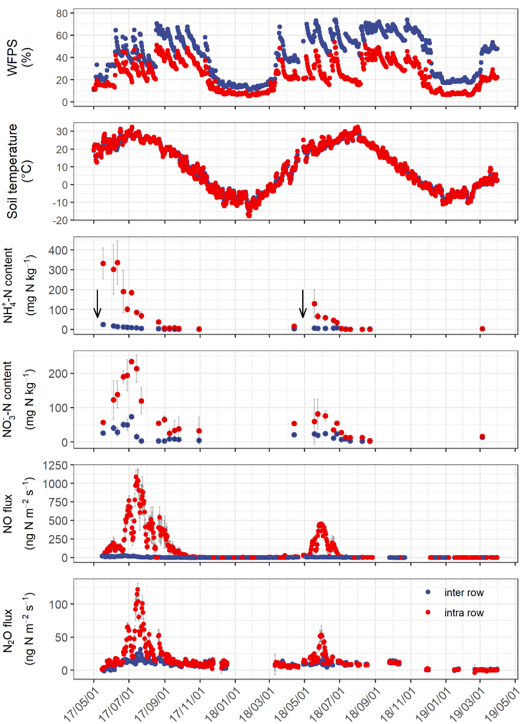Intensified Droughts Will Affect N Gaseous Emissions in Rainfed Agriculture
Rainfed agriculture is one of the most common farming practices in Northeast China and the world, which is vulnerable to future climate change. Both NO and N2O are major contributors to atmospheric pollution and agriculture is a major source of both gaseous N. Seasonal variation of precipitation input can affect plant growth, soil microbial activities, and emissions of NO and N2O. However, the complexity of the mechanisms and the temporal and spatial variations relating to the emissions of NO and N2O in rainfed ecosystem are unclear.
Recently, a research team led by Prof. Fang Yunting from the Institute of Applied Ecology (IAE) of Chinese Academy of Sciences (CAS) used a fully automated system to continuously measure soil NO and N2O emissions for two years in a typical rainfed maize field in Northeast China.
Two years measurements reveal substantial interannual and seasonal variations for N gaseous emissions, especially the NO loss. Annual NO emissions differ strongly between the two years (Figure 1), with 8.9 kg N ha-1 for the first year and 2.3 kg N ha-1 for the second year, and accounting for 5.9% and 1.9% of the applied fertilizer N, respectively. This difference was found to be mainly attributed to the variations in the timing and amount of precipitation before and after the fertilization. The severe spring drought affects plant growth, soil NH4+ and NO3- availabilities, and NO and N2O emissions. During growing season, the temporal pattern of NO and N2O emissions were similar (Figure 1), and mainly controlled by soil mineral N content and soil temperature. In addition, both NO and N2O emissions during the freeze–thaw periods were negligible in this region for rainfed agriculture.
With the global climate change, severe drought makes the rainfed agriculture more vulnerable. These results try to fill an important knowledge gap in the understanding of climate change (intensified droughts) impact on NO and N2O (atmospheric pollutants) emissions in rainfed agricultures (major cropping practices). In addition, this research provides some effective advice to control the adverse effects of agricultural managements to regional and global atmospheric pollution.
The studies entitled “Interannual and seasonal variabilities in soil NO fluxes from a rainfed maize field in the Northeast China” and “Temporal patterns of N2O fluxes from a rainfed maize field in Northeast China” have been respective published online in Environmental Pollution and Frontiers in Environmental Science, which were financially supported by the National Key Research and Development Program of China, the Key Research Program of Frontier Sciences of Chinese Academy of Sciences, K.C.Wong Education Foundation of Chinese Academy of Sciences, and the National Natural Science Foundation of China.

Fig.1 Schematic diagram of the automated monitoring system for NO and N2O fluxes (Image by SU Chenxia).

Fig.2 Seasonal changes of daily mean soil moisture, temperature, concentration of mineral nitrogen, and NO and N2O fluxes from the intra-row and inter-row soils from April 2017 to March 2019. Error bars indicate standard errors. The downward arrows represent the time of fertilization (Image by SU Chenxia).
Contact
YUE Qian
Institute of Applied Ecology, Chinese Academy of Sciences
Tel: 86-24-83970324
E-mail: yueqian@iae.ac.cn